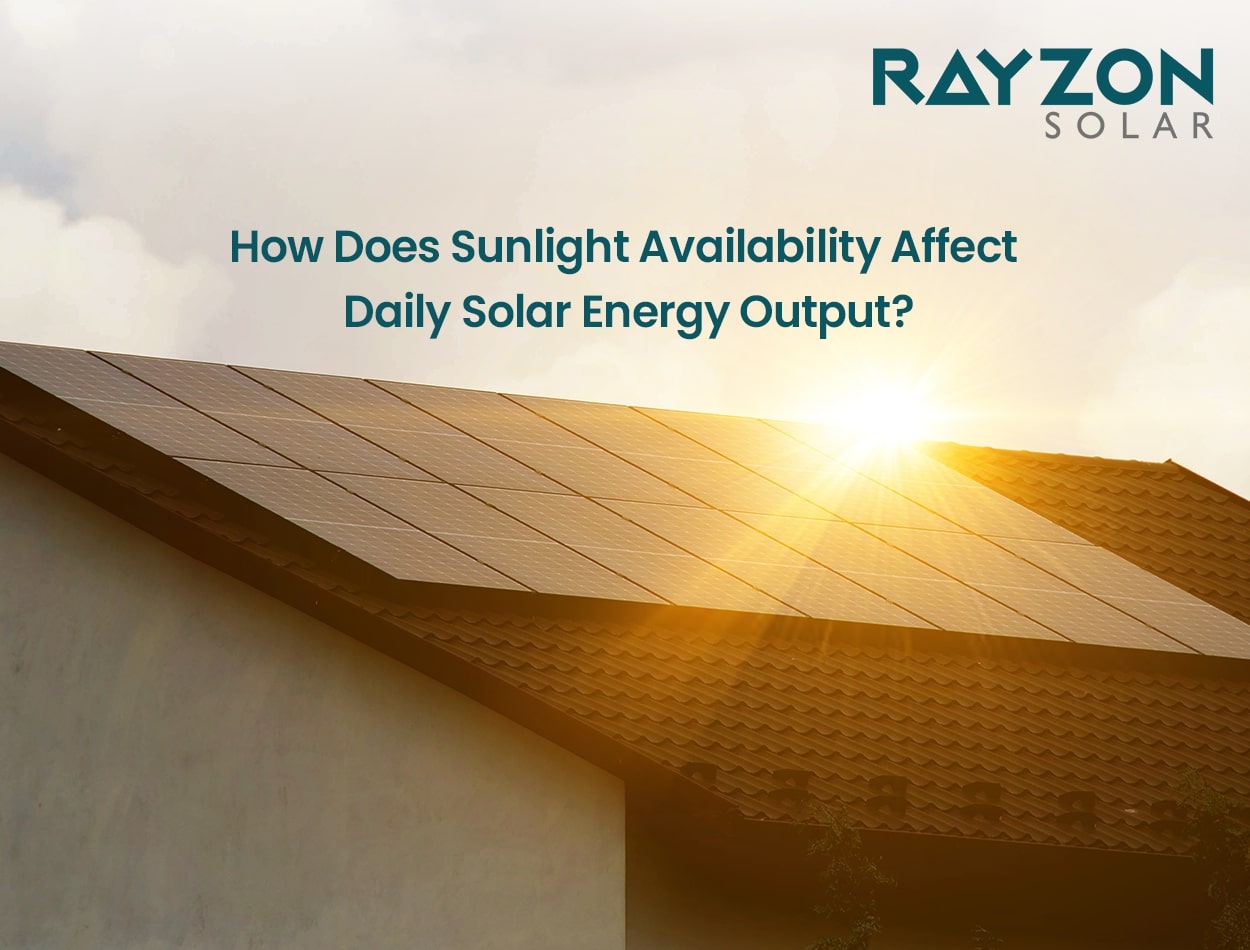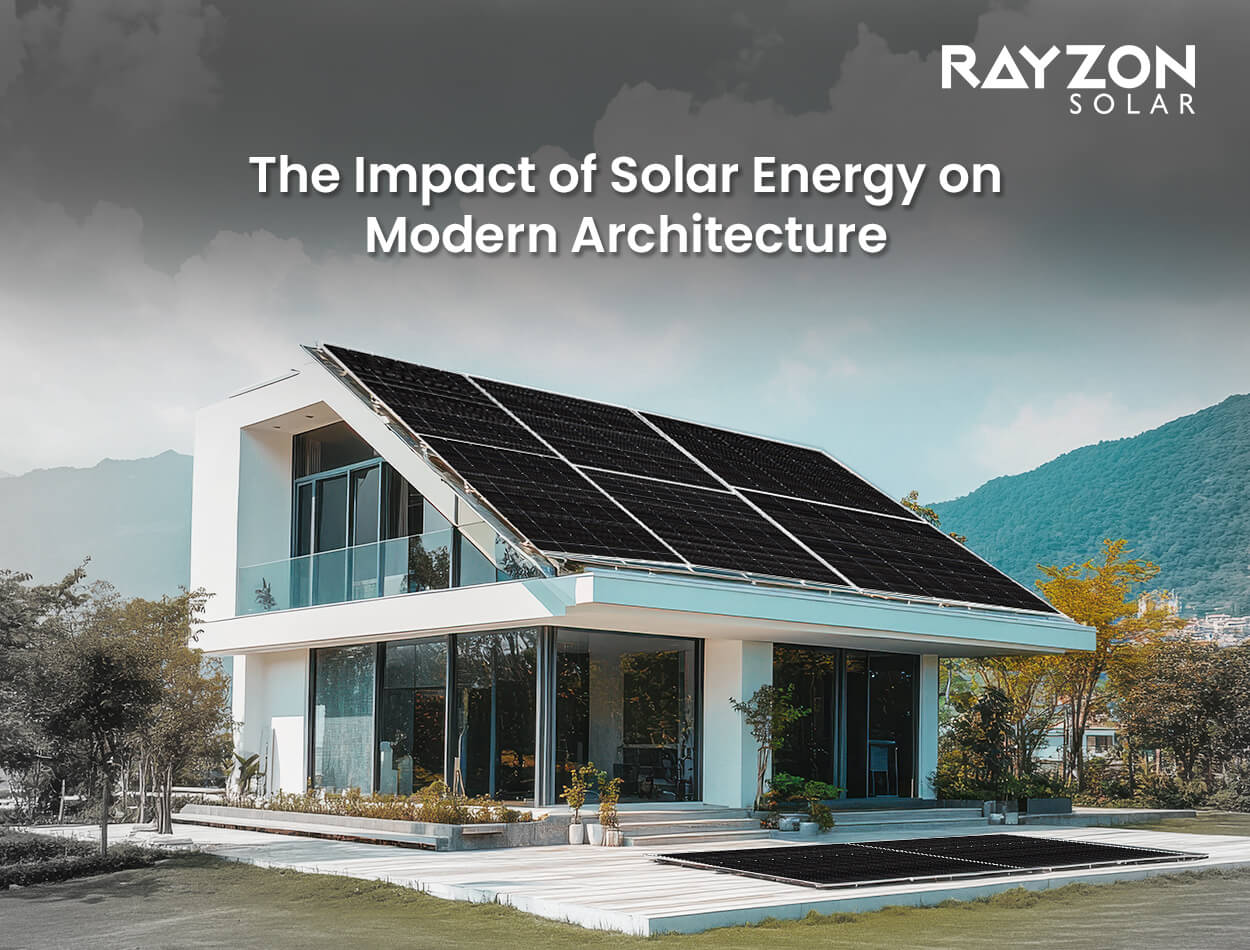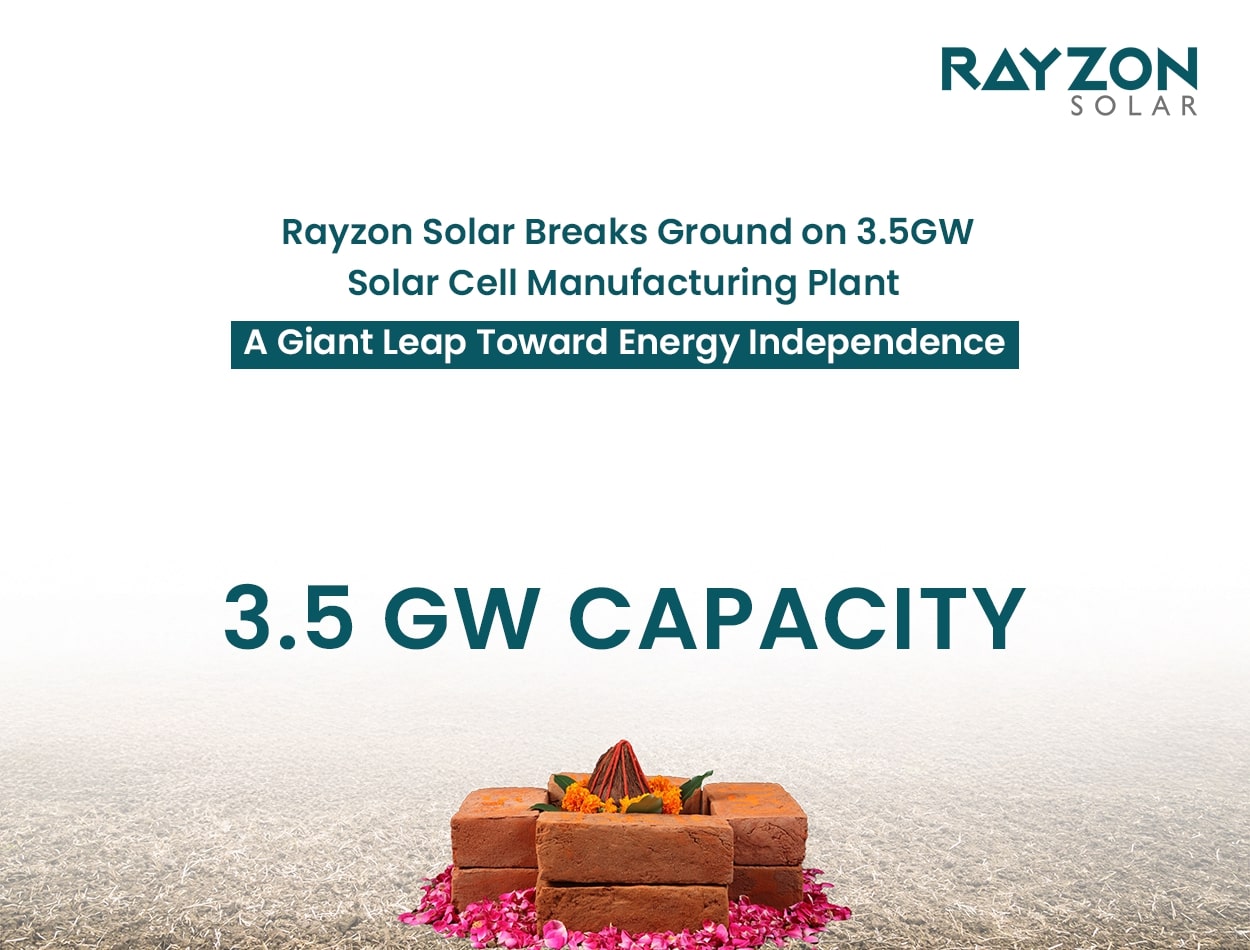
How Does Sunlight Availability Affect Daily Solar Energy Output?
Every day, the sun delivers an incredible amount of energy to the Earth, enough to power our entire planet many times over. As solar technology becomes more accessible and affordable, homeowners, businesses and governments around the world are harnessing this clean and renewable source of power through solar panels. However, not all solar panel systems perform the same. One critical factor that determines how much electricity your system can generate each day is sunlight availability.
So, what does sunlight availability mean? It goes beyond just how long the sun is up. It’s about how much usable sunlight, measured in peak sun hours, your panels receive. From your location on the map to seasonal weather patterns, several natural elements influence the intensity and duration of sunlight that reaches your panels. These factors play a direct role in how much daily solar energy your system can produce.
In this blog, we’ll take a deep dive into the science and real-world impact of sunlight availability. We’ll explain why a house in sunny Rajasthan generates more electricity than one in rainy Kerala, even with the same solar setup. We’ll also discuss how weather, cloud cover, shading, panel angle and orientation all affect solar efficiency. Whether you’re planning to install solar panels or looking to maximise your current system’s output, understanding these sunlight-related variables is essential.
By the end of this article, you'll have a clear understanding of how sunlight availability affects solar power generation and practical tips to ensure your panels capture as much solar energy as possible, every single day.
What Are Peak Sun Hours and Why Do They Matter?
When we talk about sunlight availability, many people think it's just about how many hours the sun is visible in the sky. However, solar panels don’t rely on ordinary daylight; they need intense, direct sunlight to perform efficiently. This is where the concept of peak sun hours becomes essential.
What Are Peak Sun Hours?
A peak sun hour refers to one hour in which the solar irradiance (sunlight intensity) averages 1,000 watts per square meter (W/m²). This is considered the optimal sunlight intensity for maximum energy generation by solar panels.
For example, if a region receives 5 peak sun hours per day, it doesn’t mean the sun shines for only 5 hours. It means that, over the day, the sunlight received was equivalent in energy to five hours of perfect solar intensity.
Why Peak Sun Hours Matter
Peak sun hours directly impact how much energy your solar system can generate in a day. The more peak sun hours your location receives, the more electricity your panels will produce. It's a critical measurement used to:
- Estimate daily solar energy output
- Size a solar system appropriately
- Calculate ROI on solar investments
In simple terms:
More peak sun hours = More solar electricity = Higher daily solar energy output
Average Peak Sun Hours in Different Regions
| Region | Average Peak Sun Hours Per Day |
|---|---|
| Rajasthan, India | 6–7 hours |
| California, USA | 5.5–6 hours |
| Germany | 2.5–3 hours |
| United Kingdom | 2–2.5 hours |
Understanding peak sun hours is the first step toward optimising your solar power system’s daily output. The higher the number, the more efficient and cost-effective your solar installation will be.
Geographic Location: Latitude Can Make or Break Solar Output
Your geographic location is one of the most influential factors in determining how much energy your solar panels can generate each day. While solar technology can work in nearly all regions of the world, not all locations receive the same intensity or duration of sunlight. The closer you are to the equator, the better your chances of maximising your daily solar energy output.
Latitude and Solar Potential: Closer to the Equator = More Power
Regions located near the equator, such as parts of India, Africa, Southeast Asia and South America, receive more direct sunlight throughout the year. This results in higher solar irradiance and longer periods of peak sun hours, both of which are essential for efficient solar power generation.
Examples of High-Sunlight Regions:
- Gujarat, India – Known for its strong solar resource and high number of sunny days annually.
- Arizona, USA – One of the top U.S. states for solar power thanks to its desert climate and high solar exposure.
- Australia (Northern regions) – Near the tropics, offering consistent year-round solar intensity.
Further from the Equator = Less Consistent Solar Performance
As you move farther away from the equator (toward the poles), the angle and consistency of sunlight decrease. Northern Europe, Canada and parts of northern Asia receive fewer peak sun hours per day, particularly in winter months when daylight is scarce and the sun remains low in the sky.
- Shorter daylight hours in winter
- Lower solar angle
- Higher cloud cover and weather interruptions
Key Takeaway: Latitude Can Make or Break Solar Output
The closer your location is to the equator, the more consistent and intense sunlight you receive, leading to higher daily solar energy output. Understanding how your latitude affects sunlight availability helps in selecting the right system size, panel type and orientation to make the most of your location’s solar potential.
Seasonal Changes & Weather Variations
While solar energy is reliable and renewable, it’s not entirely immune to seasonal shifts and weather conditions. The changing position of the sun throughout the year and the presence of clouds, rain, or pollution can significantly affect your solar panel system’s daily output.
Winter vs. Summer: A Solar Power Showdown
Summer Advantages:
- Longer daylight hours mean more time for panels to absorb sunlight.
- The sun sits higher in the sky, resulting in a better angle for direct sunlight.
- Clear skies are more frequent, reducing shading from clouds.
Winter Challenges:
- Shorter days mean less time for sunlight collection.
- The lower sun angle reduces the intensity of light hitting the panels.
- Increased cloud cover, rain, or snow can further obstruct sunlight.
As a result, solar output in winter can drop significantly, sometimes by 30% to 50% depending on location and weather severity.
Do Solar Panels Work on Cloudy Days?
Yes, they do, but not at full strength. Even under overcast skies, solar panels can still generate electricity using diffused sunlight. However, their efficiency drops to 10–25% of their potential output on sunny days. This is why it's important to factor in weather variability when estimating daily or monthly solar energy generation.
Pollution, Fog and Urban Haze: The Invisible Blockers
Urban areas with high levels of air pollution, dust, or smog may experience reduced solar panel performance. These particles scatter and absorb sunlight, decreasing the amount of direct solar radiation that reaches the panels.
- In cities like Delhi or Beijing, solar output can be reduced by 15–25% due to poor air quality.
- Regular cleaning and the use of anti-soiling coatings on panels can help mitigate this issue.
Key Insight:
Seasonal changes and unpredictable weather patterns can greatly influence your daily solar energy output. While summer is a solar powerhouse, winter and cloudy days can reduce efficiency, but not eliminate energy generation. By understanding how these natural variables impact your system, you can set realistic expectations and design your solar setup to perform optimally year-round.
Panel Orientation and Tilt Angle
It’s not just about how much sunlight your solar panels receive; it’s about how they receive it. Even in sun-drenched areas, if your panels are not properly positioned, you may lose a significant portion of your system’s potential output. That’s where panel orientation and tilt angle come into play.
Both factors are crucial in ensuring your solar panels receive maximum sunlight exposure during the most productive hours of the day.
Best Practices for Panel Orientation
Orientation refers to the direction your solar panels face. To capture the most direct sunlight throughout the day, panels must be positioned to face the sun’s path as closely as possible.
- In the Northern Hemisphere: Panels should face true south to get the most exposure to sunlight during peak sun hours.
- In the Southern Hemisphere: Panels should face true north for optimal performance.
East-facing panels get good morning sun, while west-facing ones catch late afternoon rays, but neither receives full exposure like a south- or north-facing system. Unless you have unique energy usage patterns (e.g., high afternoon consumption), true south/north is ideal for most homeowners.
Optimal Tilt Angle: Matching Latitude for Maximum Efficiency
Tilt angle is the vertical angle at which your solar panels are mounted relative to the ground. The goal is to ensure sunlight hits the panels as directly as possible.
General Rule of Thumb: Tilt your panels at an angle approximately equal to your location’s latitude.
- Ahmedabad, India (~23° latitude): set your panels at a 23° tilt.
- New York, USA (~40° latitude): a 40° tilt is typically ideal.
Seasonal Tilt Adjustments for Optimized Year-Round Performance
Some systems use adjustable mounts to tweak the tilt angle seasonally:
- Summer: A shallower tilt (5–15° less than latitude) to capture the high sun.
- Winter: A steeper tilt (5–15° more than latitude) to catch the lower sun angle.
Though not always feasible for rooftop installations, this feature can significantly boost annual energy output, especially in regions with strong seasonal variation.
The Impact of Improper Tilt and Orientation
- 10–25% loss in daily solar energy output
- Increased shading risk (from nearby objects)
- Reduced efficiency during peak sun hours
That's why ensuring the right orientation and tilt angle is a key step in any successful solar panel installation.
Key Insight
A solar panel system with the right orientation and tilt angle captures more sunlight, performs more efficiently and delivers better returns, especially when combined with high sunlight availability. Whether you're installing panels on a rooftop or a ground-mounted structure, consult a solar expert to optimise panel positioning for your specific location.
Daily Solar Output Formula
Understanding the theory behind solar energy is essential, but seeing the numbers in action makes it even clearer. Whether you're planning a new installation or assessing your current system, you can estimate your daily solar energy output using a straightforward formula.
Daily Energy Output (kWh) = System Capacity (kW) × Peak Sun Hours × Panel Efficiency
Example Calculation:
For a 2 kW system, 5 peak sun hours and 18% efficiency:
Daily Output = 2 × 5 × 0.18 = 1.8 kWh/day
Scaling Up: For a 5 kW system: 5 × 5 × 0.18 = 4.5 kWh/day
This is a simple estimate. Actual output can vary due to:
- Panel orientation and tilt
- Shading or obstructions
- Seasonal weather conditions
- Dirt or debris on panels
Key Insight
With just your system size, sunlight availability and panel efficiency, you can easily estimate how much solar energy you’re generating daily, making it easier to plan your savings and energy use.
How to Maximise Daily Output Regardless of Location
- Keep panels clean and dust-free
- Avoid shading at all costs
- Use MPPT inverters to maximise current conversion
- Choose high-efficiency panels (like monocrystalline modules)
- Use proper tilt angles based on location
Conclusion
At the heart of every efficient solar energy system lies one undeniable truth: sunlight availability is everything. No matter how advanced your solar panels are or how large your system is, their daily energy output is ultimately dictated by how much usable sunlight they receive.
From your geographic location and seasonal climate to peak sun hours, panel orientation and tilt angle, each element plays a crucial role in determining your system’s performance. Areas closer to the equator, with more consistent and intense sunlight, naturally yield higher solar energy generation. But even if you live in a cloudier or colder region, careful design and strategic planning can help you maximise output.
By:
- Choosing the right panel direction and angle,
- Minimizing shading and obstructions,
- Factoring in local weather patterns and
- Selecting high-efficiency solar technology,
You can ensure your solar system is positioned to capture as much sunlight as possible during the most critical hours of the day.



